Chrysanthemum – Ju hua,mums,chrysanthemum chinese,chrysanthemums for sale,dried chrysanthemum,buy chrysanthemum,Chrysanthemum morifolium,Chrysanthemum tcm,Chrysanthemum herb,Chrysanthemum
[Medicinal Use] This product is the head inflorescence of the chrysanthemum plant and its variants of the Asteraceae family.
[Nature and flavor and meridians] Sweet, bitter, slightly cold. Enters the lung and liver meridians.
[Effects] Disperse wind-heat, improve eyesight, clear heat and detoxify, and calm liver yang.
[Clinical Application] 1. Used for exogenous wind-heat, fever, aversion to cold, headache and other symptoms.
Chrysanthemum has weak wind-dispersing effect and good heat-clearing effect. It is often used with mulberry leaves for exogenous wind-heat. It can also be used with scutellaria baicalensis and gardenia to treat symptoms such as excessive heat and irritability.
2. Used for red and swollen eyes.
Chrysanthemum can treat red and swollen eyes, whether it is caused by liver fire or wind-heat, because this product can clear liver fire and disperse wind-heat. It is often used with cicada shells, white tribulus and the like. If the liver yin is insufficient and the eyes are blurred, it is often used with raw rehmannia and wolfberry.
3. Used for sores, swelling and pain.
Chrysanthemum has excellent heat-clearing and detoxifying effects. It is an important medicine for surgery. It is mainly used for heat-toxic sores, redness, swelling, heat and pain. It has a good effect on carbuncle, swelling, pain and poison. It can be taken orally or crushed for external application. In clinical practice, it is often used in combination with heat-clearing and detoxifying products such as ground clove and dandelion.
4. It is used for dizziness, vertigo, head swelling, headache and other symptoms caused by hyperactivity of liver yang.
Chrysanthemum can calm liver yang. It is often used in combination with mother of pearl and kudzu vine for dizziness caused by hyperactivity of liver yang.
[Prescription name] Yellow chrysanthemum, Hangzhou chrysanthemum (both are yellow chrysanthemums, used raw; have good effects in dispersing wind-heat, clearing heat and detoxifying.)
White chrysanthemum, chamomile, Chu chrysanthemum (all are white chrysanthemums, used raw; have good effects in calming the liver.)
[General dosage and usage] Three to five qian, decocted.
[Attached medicine] 1. Wild chrysanthemum: the stems and leaves of the plant chrysanthemum brain of the Asteraceae family. There are wild chrysanthemums everywhere. The nature and flavor are bitter, pungent and cool. It has the function of clearing heat and detoxifying, and can treat rhinitis, bronchitis, wind-fire red eyes, sores, carbuncle, and sore throat. The general dosage is five to one tael, decocted and taken orally. For the treatment of snake bites, eczema, and skin itching, use three to four taels, decoct and fumigate, or crush the fresh grass for external application.
2. Wild chrysanthemum: The flower of wild chrysanthemum, the nature and flavor of which are the same as those of wild chrysanthemum, but the effect of clearing heat and detoxifying is more significant. In addition, it also has the effect of lowering blood pressure and can treat hypertension. The general dosage is two to five taels, decocted and taken or applied externally in appropriate amounts.
[Comments] 1. Chrysanthemum is a medicine, mainly divided into white chrysanthemum, yellow chrysanthemum, and wild chrysanthemum. Both yellow and white chrysanthemum have the effects of dispersing wind-heat, calming the liver and improving eyesight, and clearing heat and detoxifying. White chrysanthemum tastes sweet, has a slightly weaker heat-clearing effect, and is good at calming the liver and improving eyesight; yellow chrysanthemum tastes bitter, has a stronger heat-clearing effect, and is often used to dispel wind-heat; wild chrysanthemum tastes very bitter, and has a strong heat-clearing and detoxifying effect. The stems and leaves of wild chrysanthemum have similar functions to flowers, and are effective whether taken orally or applied externally.
2. Mulberry leaves and chrysanthemums can both dispel wind-heat and clear the lungs and liver, so the two medicines are often used together for symptoms such as exogenous wind-heat, fever and headache, and red and swollen eyes. However, mulberry leaves have a better effect in dispersing wind and clearing the lungs, so mulberry leaves are often used instead of chrysanthemums to treat dry lung coughs; chrysanthemums are good at calming liver yang and can clear heat and detoxify.
[Example of prescription] Chrysanthemum tea powder “Heji Bureau Prescription”: chrysanthemum, mint, schizonepeta, chuanxiong, saposhnikovia divaricata, angelica dahurica, asarum, silkworm. Treat dizziness, hemiplegia, red eyes and nasal congestion.
Chrysanthemum powder “Hejijufang”: white chrysanthemum, white tribulus, angelica root, horsetail, cicada shell. Treat liver wind poison, red and swollen eyes, dim light shyness, excessive tears and pain, and gradual formation of pannus.
This product is the dried head inflorescence of Chrysanthemum morifolium Ramat., a plant of the Asteraceae family. It is harvested in batches when the flowers are in full bloom from September to November, and dried in the shade or baked, or dried in the sun after fumigation and steaming. The medicinal materials are divided into “Haoju”, “Chuju”, “Gongju”, “Hangju” and “Huaiju” according to their origin and processing methods.
[Properties] Haoju is inverted cone or cylindrical, sometimes slightly flattened into a fan shape, with a diameter of 1.5~3cm, and discrete. Involucre disc-shaped: 3~4 layers of involucre bracts, ovate or elliptical, herbaceous, yellow-green or brown-green, with soft hairs on the outside, and membranous edges. The receptacle is hemispherical, without receptacles or receptacles. There are several layers of ligulate flowers, female, located on the periphery, off-white, straight, raised, folded longitudinally, with scattered golden glandular dots; there are many tubular flowers, bisexual, located in the center, hidden by the ligulate flowers, yellow, with 5 teeth at the top. Achenes are rudimentary and have no pappus. The body is light, soft and smooth, and crisp when dry. The smell is fresh and fragrant, and the taste is sweet and slightly bitter. Chuju is irregularly spherical or oblate, with a diameter of 1.5~2.5cm. The ligulate flowers are off-white, irregularly twisted, involuted, and wrinkled at the edges. Sometimes light brown glandular dots can be seen; tubular flowers are mostly hidden. Gongju is oblate or irregularly spherical, with a diameter of 1.5~2.5cm. The ligulate flowers are white or off-white, obliquely ascending, reflexed at the top, slightly involuted and wrinkled at the edges, and usually have no glandular dots: tubular flowers are few, exposed,
Hangju
is disc-shaped or oblate, with a diameter of 2.5~4cm, and often connected in pieces. The ligulate flowers are white or yellow, flat or slightly folded, adhered to each other, and usually without glandular dots; the tubular flowers are mostly exposed.
It is irregularly spherical or oblate, with a diameter of 1.5~2.5cm. Most of them are ligulate flowers, which are white or yellow, irregularly twisted, rolled inward, and wrinkled at the edges. Sometimes glandular dots can be seen; the tubular flowers are mostly hidden.
[Identificazione]
(1) The powder of this product is yellow-white. The pollen grains are spherical, with a diameter of 32~37um, with mesh patterns and short thorns on the surface, and 3 pores. There are many T-shaped hairs, with long cells at the top, two arms of nearly equal length, 2~4 cells on the stalk, and the head of the glandular hair is sole-shaped, with 6~8 cells arranged opposite to each other. There are many small calcium oxalate crystals.
(2) Take 1g of this product, chop it into pieces, add 20ml of petroleum ether (30~60℃), and ultrasonically treat it for 10 minutes. Discard the petroleum ether, evaporate the residue, add 1ml of dilute hydrochloric acid and 50ml of ethyl acetate, and ultrasonically treat it for 30 minutes. Filter, evaporate the filtrate to dryness, and add 2ml of methanol to dissolve the residue to use as the test solution. Take another 1g of chrysanthemum reference medicinal material and prepare the reference medicinal material solution in the same way. Take the chlorogenic acid reference substance and add ethanol to prepare a solution containing 0.5mg per 1ml as the reference substance solution. According to the thin layer chromatography method (General Rule 0502), take 0.5~1pl of each of the above three solutions and spot them on the same polyamide film respectively. Use the upper layer solution of toluene-ethyl acetate-formic acid-glacial acetic acid-water (1:15:1:1:2) as the developing agent, develop, take out, dry, and examine under ultraviolet light (365nm). In the chromatogram of the test sample, fluorescent spots of the same color appear at the corresponding positions of the chromatogram of the reference medicinal material and the chromatogram of the reference sample.
[Ispezione]
The water content shall not exceed 15.0% (General Rule 0832 Method 2).
[Determinazione del contenuto]
Determine according to the high performance liquid chromatography method (General Rule 0512).
Chromatographic conditions and system suitability test Use octadecylsilane bonded silica gel as filler; acetonitrile as mobile phase A, 0.1% phosphoric acid solution as mobile phase B, and perform gradient elution according to the provisions in the following table: the detection wavelength is 348nm. The number of theoretical plates calculated based on the 3,5-0-dicaffeoylquinic acid peak should not be less than 8000.
Preparation of reference solution Take appropriate amount of chlorogenic acid reference, luteolin reference, 3,5-0-dicaffeoylquinic acid reference, weigh accurately, place in brown volumetric flask, add 70% methanol to make a mixed solution containing 35μg chlorogenic acid, 25ug luteolin, 80ug 3,5-0-dicaffeoylquinic acid per 1m, and obtain (store below 10℃). Preparation of test solution Take about 0.25g of this product powder (passed through No. 1 sieve), weigh accurately, place in a stoppered conical flask, accurately add 25ml of 70% methanol, stopper, weigh, ultrasonically treat (power 300W, frequency 45kHz) for 40 minutes, cool, weigh again, make up the lost weight with 70% methanol, shake well, filter, and take the filtrate to obtain. Determination method Accurately aspirate 5μ of reference solution and test solution respectively, inject into liquid chromatograph, and determine to obtain.
Calculated on a dry basis, this product contains no less than 0.20% chlorogenic acid (C6H1g0g), no less than 0.080% luteolin (C1H2oO1), and no less than 0.70% 3,5-0-dicaffeoylquinic acid (C25H24012).
[Natura e sapore e meridiani]
Sweet, bitter, slightly cold. Enters the lung and liver meridians.
[Funzioni e indicazioni]
Disperses wind and heat, soothes the liver and improves eyesight, clears heat and detoxifies. Used for wind-heat cold, headache, dizziness, red and swollen eyes, blurred vision, sores, carbuncle, swelling and poison.
[Uso e dosaggio]
da 5 a 10 g.
[Magazzinaggio]
Put in a cool and dry place, keep sealed, prevent mildew and moth
Where are the main production areas of chrysanthemums?
Chrysanthemums are mainly produced in Zhejiang, Anhui, Henan, and Sichuan.
What is the main medicinal part of chrysanthemum?
The medicinal part of this product is the dried capitula of Chrysanthemum morifolium Ramat.
How are chrysanthemums recorded in ancient books?
“Shennong’s Herbal Classic”: “It is used to treat all kinds of wind-induced dizziness, swelling and pain, loose eyes, tears, dead skin, rheumatism, and blood and qi.
“The Heart of Using Medicine”: “It removes cataracts and brightens the eyes.
“Supplement to Compendium of Materia Medica”: “Specially enters the Yang division. Treats all kinds of wind-induced dizziness, relieves alcohol poisoning and carbuncle.” “Yellow tea chrysanthemum, brightens the eyes and dispels wind, searches for liver qi, treats dizziness and vertigo, nourishes blood and moisturizes the face, and enters the blood division; white tea, clears the lung qi, relieves cough and reverse, clears the three-burner fire, treats muscle heat, and enters the qi division.
La domanda più frequente posta dai pazienti
Which chrysanthemum is good for the eyes?
Among the medicinal chrysanthemums, white chrysanthemums are better for the eyes. Chrysanthemum is the dried head inflorescence of the chrysanthemum plant of the Asteraceae family. It is a common ornamental plant and also a Chinese medicinal material. It is harvested and dried in autumn, and the best ones are those with complete flowers, bright colors, fresh fragrance, and no impurities. Among the medicinal chrysanthemums, they are divided into Haoju, Chuju, Gongju, Hangju, etc. according to the different origins and processing methods. Haoju and Chuju are of the best quality for medicine, while Hangbai chrysanthemum and Gongju are mainly used for drinking. Due to the different colors of the flowers, there are yellow chrysanthemums and white chrysanthemums. Yellow chrysanthemums are suitable for dispersing wind and heat. , white chrysanthemum is suitable for clearing liver and improving eyesight. Therefore, white chrysanthemum is better for eyes. Chrysanthemum is light and dispersing, bitter and can relieve, slightly cold and heat-clearing, enters the liver meridian, can disperse wind-heat in the liver meridian, can be used to treat wind-heat in the liver meridian, or red swelling and pain caused by liver fire; it can also be used with drugs such as wolfberry, black sesame, and rehmannia to nourish the liver and kidney, benefit yin and improve eyesight, and be used to treat blurred vision and blurred vision caused by liver and kidney deficiency and deficiency of essence and blood. In addition, in daily life, white chrysanthemum can also be used for making tea, decocting soup, cooking porridge, etc., and it also has good health value for people who often use their eyes, such as students and white-collar workers. It should be noted that chrysanthemum is slightly cold and easy to hurt spleen yang. People with cold diarrhea should use less to avoid aggravating the original condition.
The difference between chrysanthemum and mulberry leaf?
Both mulberry leaves and chrysanthemum can disperse wind-heat, suppress liver yang, clear liver and improve eyesight, and can be used to treat wind-heat cold or the initial stage of febrile disease Fever, slight aversion to wind and cold, headache: hyperactivity of liver yang, headache and dizziness; red and swollen eyes caused by wind-heat attack or liver fire, as well as insufficient liver and kidney essence and blood, dark eyes and other symptoms. However, mulberry leaves have a strong ability to dispel wind and heat, and can also clear the lungs and moisten dryness, cool blood and stop bleeding. Chrysanthemum has a strong ability to calm the liver, clear the liver and improve eyesight, and can clear heat and detoxify.
Effetti
The main effects of chrysanthemum are to dispel wind and heat, calm liver yang, clear the liver and improve eyesight, clear heat and detoxify, and can be used It is used to treat wind-heat cold, the initial stage of febrile disease, headache and dizziness caused by hyperactivity of liver yang, red and swollen eyes, blurred vision, sores, carbuncle and swelling.
What are the main effects and clinical applications of chrysanthemum?
· Wind-heat cold, the initial stage of febrile disease: This herb is pungent and dispersing, light and reaches the surface, with clear and floating qi, slightly cold and heat-clearing, and has the function of dispersing wind-heat in the lung meridian, but the power of dispersing surface evil is not strong. It is often used to treat wind-heat cold, or the initial stage of febrile disease, when the evil of warm invades the lung, fever, headache, cough and other symptoms , and is often used together with mulberry leaves, which have similar properties and functions, and is often used in combination with forsythia, mint, platycodon, etc., such as mulberry and chrysanthemum drink.
Hyperactivity of liver yang, headache and dizziness: This product is cold in nature, enters the liver meridian, can clear liver heat and calm liver yang, and is often used to treat hyperactivity of liver yang, headache and dizziness. It is often used together with calcite, mother of pearl, white peony and other liver calming and yang suppressing drugs. If dizziness and headache are caused by liver fire, as well as excessive heat in the liver meridian and wind caused by extreme heat, it can be used with antelope horn, Uncaria rhynchophylla, mulberry leaves, etc. It can be used together with drugs that clear liver heat and relieve liver wind, such as Lingjiao Gou Teng Tang.
Red and swollen eyes, blurred vision: This product is pungent, dispersing, bitter, slightly cold and clears heat, enters the liver meridian, can both disperse liver meridian wind-heat and clear liver heat to improve eyesight, so it can be used to treat liver meridian wind-heat, or red and swollen eyes caused by liver fire. To treat the former, it is often used with drugs that disperse wind-heat and improve eyesight, such as cicada shells, horsetail, and white silkworms. To treat the latter, it can be used together with drugs that clear the liver and improve eyesight, such as stone cassia, cassia seeds, and Prunella vulgaris. If the liver and kidney essence and blood are insufficient, the eyes are not nourished, the eyes are blurred, and the vision is unclear, it is often used with drugs that nourish the liver and kidney, benefit yin and improve eyesight, such as Qiju Dihuang Wan. Sores, carbuncle, swelling and poison: This product is bitter and slightly cold, can clear heat and detoxify, can be used to treat sores, carbuncle, swelling and poison, and is often used with honeysuckle and raw licorice. Because its ability to clear away heat, detoxify and dissipate carbuncle is not as good as wild chrysanthemum, it is less used clinically than wild chrysanthemum.
What other effects does chrysanthemum have?
In my country’s traditional food culture, some Chinese medicinal materials are often widely consumed as food ingredients by the people, that is, substances that are both food and Chinese medicinal materials according to tradition (i.e. edible and medicinal substances). According to the documents issued by the National Health Commission and the State Administration for Market Regulation, chrysanthemum can be used as both medicine and food within a limited range of use and dosage.
Commonly used medicinal diet recipes for chrysanthemum are as follows:
Treat wind-heat headache: chrysanthemum, gypsum, and Chuanxiong, each three qian. Grind into powder. Take one and a half qian each time, mix with tea,
Treat wind vertigo: chamomile flowers are dried violently. Grind into powder, feed with rice, and steam it into wine. .
Treat heat-toxic wind attack, red eyes and dizziness, dizziness and facial swelling: chrysanthemum (roasted), Paifengzi (roasted), and licorice (roasted) each one liang. The above three flavors are pounded into powder. Take three qian of warm water at night.
Treat liver and kidney deficiency, virtual fire inflammation, red and swollen eyes, long-term blurred vision, tears in the wind, fear of the sun and photophobia, dizziness and night sweats, hot flashes and weak feet: wolfberry, chamomile, Rehmannia glutinosa, Cornus officinalis, Chinese yam, white Poria, Paeonia suffruticosa, Alisma orientalis. Make pills with refined honey.
Treat liver and kidney deficiency, blurred vision: 4 liang of chamomile, 1 liang of Morinda officinalis (without the core), 2 liang of Cistanche deserticola (soaked in wine, peeled, fried, cut, and roasted), 3 liang of wolfberry. Grind the above into fine powder, and make pills with refined honey, as big as sycamore seeds. Take 30 to 50 pills each time, with warm wine or salt soup, and take on an empty stomach before meals.
Treat hemiplegic headaches: 3 qian each of chamomile, gypsum, and Chuanxiong. Grind into powder. Take 3 qian each time, with tea.
Treatment of red and swollen eyes Tea chrysanthemum 15g, white tribulus 15g, horsetail 15g, cicada shell 6g. Decoction.
Treatment of hypertension White chrysanthemum 15g, 3 red dates. Decoction.
Note: The use of Chinese herbal medicines must be differentiated and treated, and should be used under the guidance of professional Chinese medicine practitioners. They should not be used at will, and should not be used at will, let alone listen to Chinese medicine prescriptions and advertisements.
What are the compound preparations containing chrysanthemum?
Sangju Yin has the effect of dispelling wind and heat, clearing the lungs and relieving cough. It is mainly used to treat the initial onset of wind-heat and mild symptoms of superficial heat. Symptoms include coughing, mild body heat, slight thirst, thin white fur, and floating pulse. It is clinically used to treat colds, acute bronchitis, upper respiratory tract infections, pneumonia, acute conjunctivitis, keratitis, etc., which are caused by wind-heat invading the lungs or liver meridians.
Wuwei Xiaodu Yin: It has the effect of clearing heat and detoxifying, dissipating and treating sores. It is mainly used to treat the initial onset of sores. Symptoms include fever and chills, sores shaped like millet, hard and deep-rooted, like iron nails, as well as carbuncles, furuncles, redness, swelling, heat and pain, red tongue with yellow fur, and rapid pulse. It is clinically used to treat acute surgical infections such as acute mastitis and cellulitis, acute urinary tract infections, cholecystitis, pneumonia, epidemic encephalitis B and other sexually transmitted diseases with heat and toxic symptoms.
Modern research progress on chrysanthemum
Modern research shows that chrysanthemum water infusion or decoction has a certain antibacterial effect on Staphylococcus aureus, various pathogenic bacteria and skin fungi. This product also has an inhibitory effect on influenza virus PR3 and Leptospira. Chrysanthemum preparations have the effects of dilating coronary arteries, increasing coronary blood flow, and increasing myocardial oxygen consumption, and have the effects of lowering blood pressure, shortening coagulation time, Antipyretic, anti-inflammatory, sedative effects.
Utilizzo
Chrysanthemum is generally used as chrysanthemum slices, decocted, 5~10g. Yellow chrysanthemum tends to dispel wind-heat, while white chrysanthemum tends to calm the liver, clear the liver and improve eyesight. Different preparation methods have slightly different effects, but the method of use is the same. Please follow the doctor’s instructions for specific medication.
How to use chrysanthemum correctly?
Decoction, 5~10g. Yellow chrysanthemum tends to dispel wind-heat, while white chrysanthemum tends to calm the liver, clear the liver and improve eyesight.
How to prepare chrysanthemum?
Pick out weeds, dry in the shade, and dry in the sun.
What drugs should be used with chrysanthemum at the same time with special attention?
The combined use of traditional Chinese medicine and the combined use of traditional Chinese and Western medicines require syndrome differentiation and treatment, and clinical individualized treatment. If you are using other drugs, please consult a doctor before taking the medicine, and inform the doctor of all your diagnosed diseases and treatment plans.
Istruzioni per i farmaci
Chrysanthemum tastes spicy, sweet, bitter, and slightly cold. It enters the lung and liver meridians. Used to treat wind-heat cold, early stage of febrile disease, hyperactivity of liver yang, headache and dizziness, red and swollen eyes, blurred vision, sores, carbuncle and swelling.
What are the precautions when using chrysanthemum?
When used with sedatives, anesthetics and antihypertensive drugs, it is not advisable to use excessive doses.
How to identify and use chrysanthemum?
·Haoju It is inverted cone or cylindrical, sometimes slightly flattened into a fan shape, with a diameter of 1.5~3cm, discrete. The involucre is disc-shaped; the involucre bracts are 3~4 layers, ovate or elliptical, herbaceous, yellow-green or brown-green, with soft hairs on the outside, and membranous edges. The receptacle is hemispherical, without receptacles or receptacles. The ligulate flowers are several layers, female, located on the periphery, off-white, straight, raised, folded longitudinally, and scattered with golden glandular dots; the tubular flowers are numerous, bisexual, located in the center, hidden by the ligulate flowers, yellow, and 5-toothed at the top. The achenes are undeveloped and have no pappus. The body is light, soft and moist, and crisp when dry. The aroma is fresh, the taste is sweet and slightly bitter.
Chuju is irregularly spherical or oblate, with a diameter of 1.5~2.5cm. The ligulate flowers are off-white, irregularly twisted, involuted, and wrinkled at the edges, and sometimes light brown glandular dots can be seen; the tubular flowers are mostly hidden.
Gongju is oblate or irregularly spherical, with a diameter of 1.5~2.5cm. The ligulate flowers are white or off-white, obliquely ascending, reflexed at the top, slightly involuted and wrinkled at the edges, and usually without glandular dots; there are few tubular flowers, which are exposed.
· Hangju is disc-shaped or oblate, with a diameter of 2.5~4cm, and often connected in pieces. The ligulate flowers are off-white or yellow, flat or slightly folded, adhered to each other, and usually without glandular dots; there are many tubular flowers, which are exposed.
Huaiju is irregularly spherical or oblate, with a diameter of 1.5~2.5cm. Most of them are ligulate flowers, which are white or yellow, irregularly twisted, curled inward, with wrinkled edges, and glandular dots sometimes visible; tubular flowers are mostly hidden.
Crisantemo – Ju hua
Fascia di prezzo: da $66.66 a $5,288.00
+ Spedizione gratuitaChrysanthemum – Ju hua,mums,chrysanthemum chinese,chrysanthemums for sale,dried chrysanthemum,buy chrysanthemum,Chrysanthemum morifolium,Chrysanthemum tcm,Chrysanthemum herb,Chrysanthemum, [juhua], Chinese herbal medicine, English name: Chrysanthemum morifolium Ramat, main effects: dispersing wind-heat, calming liver yang, clearing liver and improving eyesight, clearing heat and detoxifying,
Chrysanthemum is a herbal medicine for dispelling exterior pathogens. It is the dried capitula of the plant Chrysanthemum morifolium Ramat. of the Asteraceae family. Chrysanthemum tastes spicy, sweet, bitter, and slightly cold. It enters the lung and liver meridians. This product mainly contains volatile oils (such as camphor, borneol, borneol acetate, etc.), flavonoids (such as luteolin, luteolin-7 glucoside, acacia, etc.), stachydrine, choline, adenine, vitamin B1 and vitamin A-like substances, amino acids, trace elements and other ingredients. It has the effects of dispersing wind-heat, calming liver yang, clearing liver and improving eyesight, clearing heat and detoxifying. It is used to treat wind-heat cold, early stage of febrile disease, hyperactivity of liver yang, headache and dizziness, red and swollen eyes, blurred vision, sores, carbuncle and swelling.
| Peso | 1kg, 10kg, 100kg |
|---|
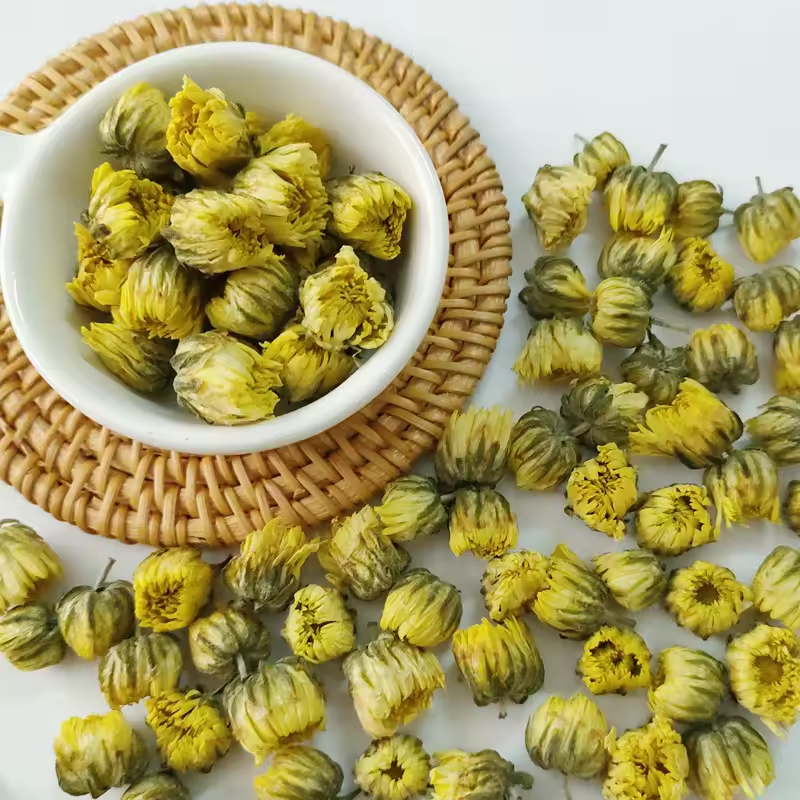

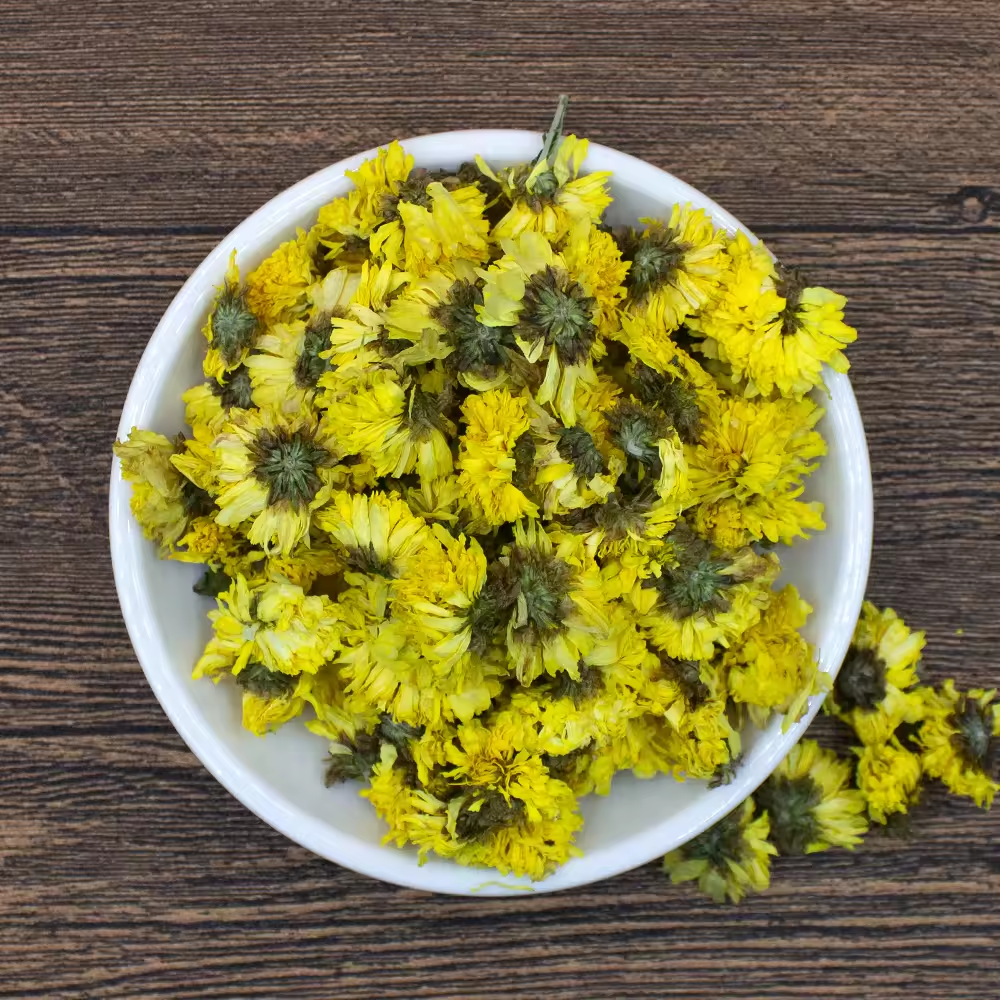

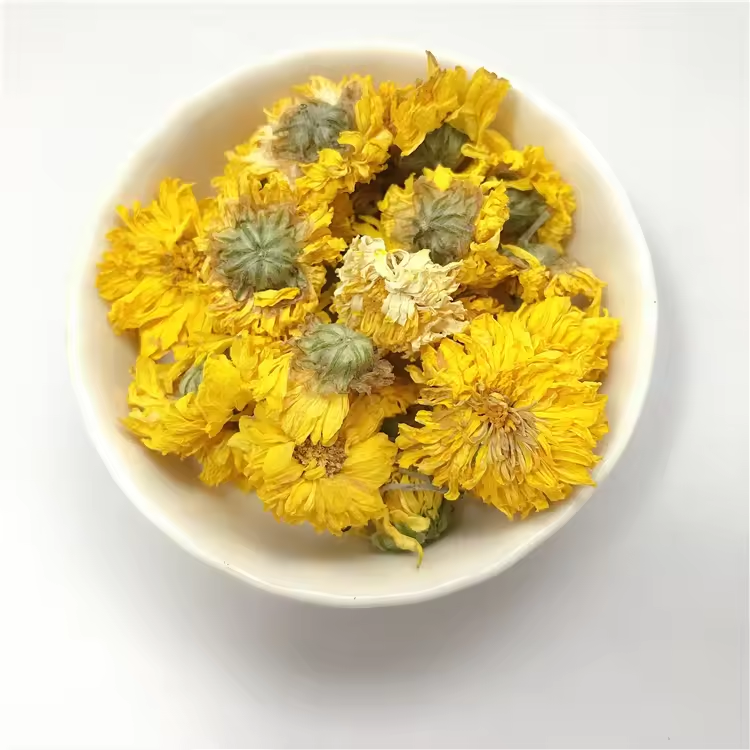
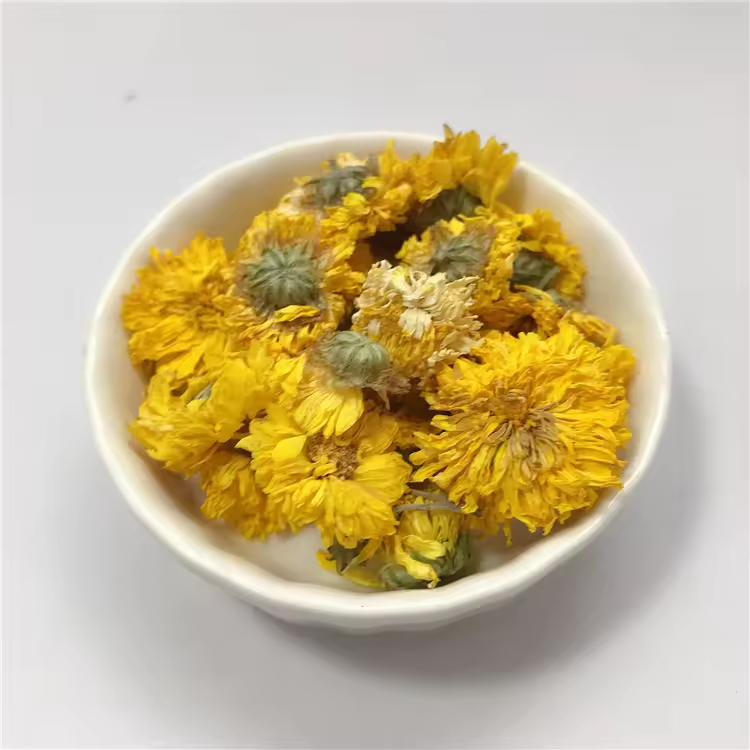
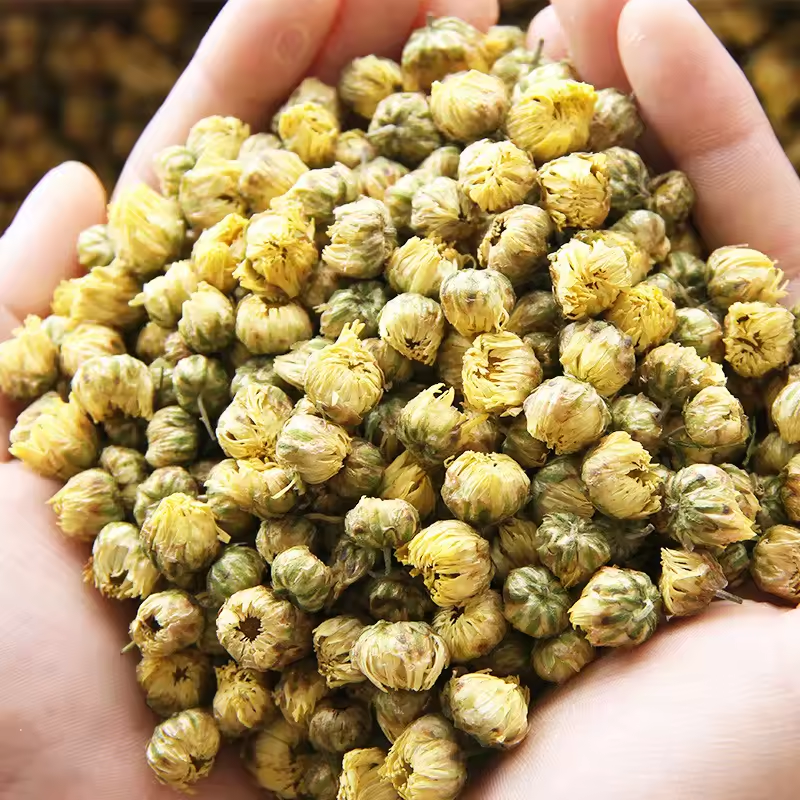
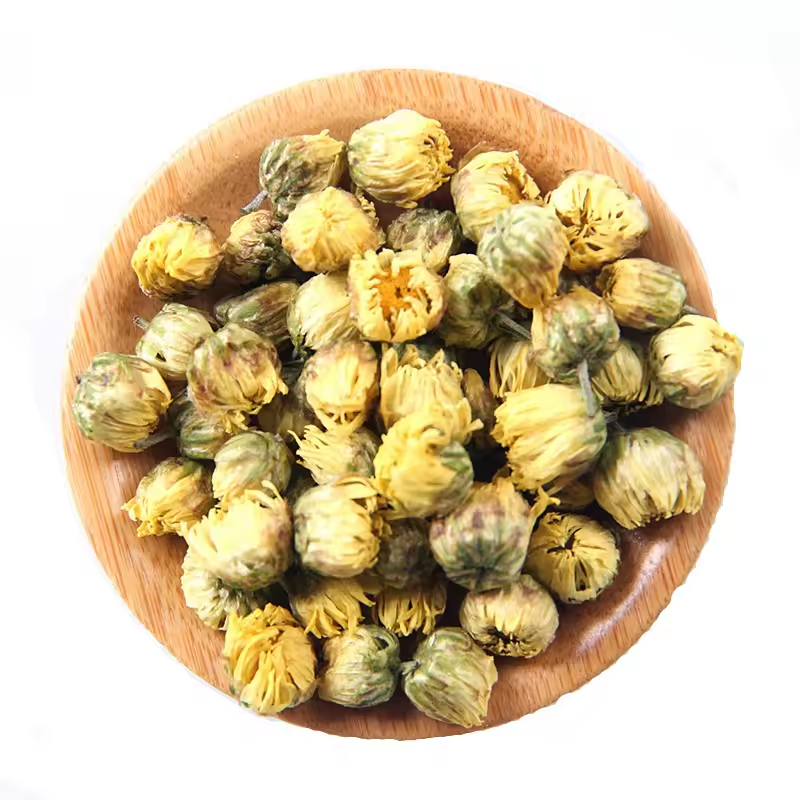

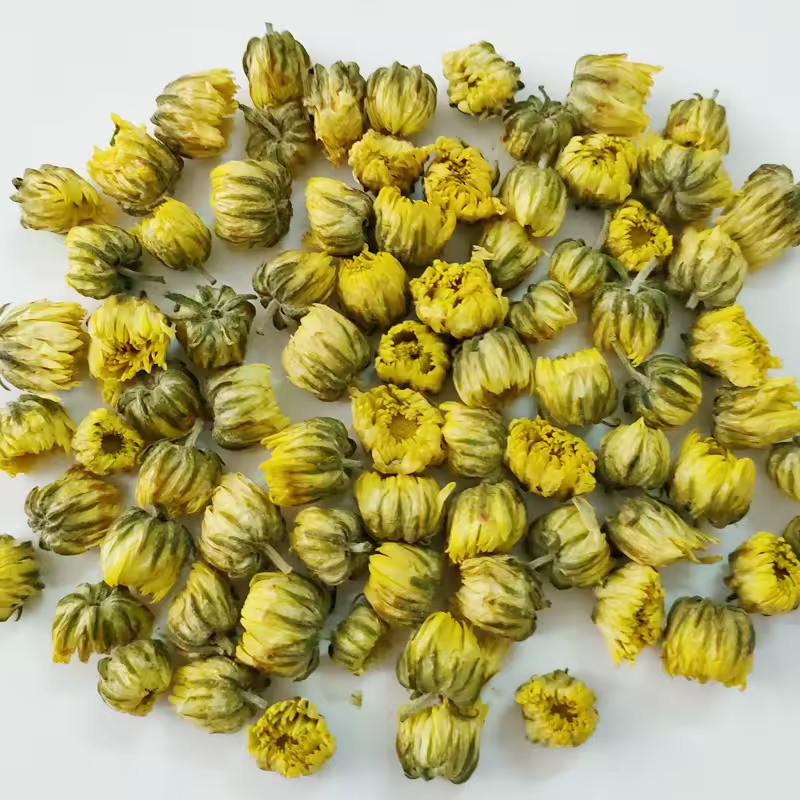
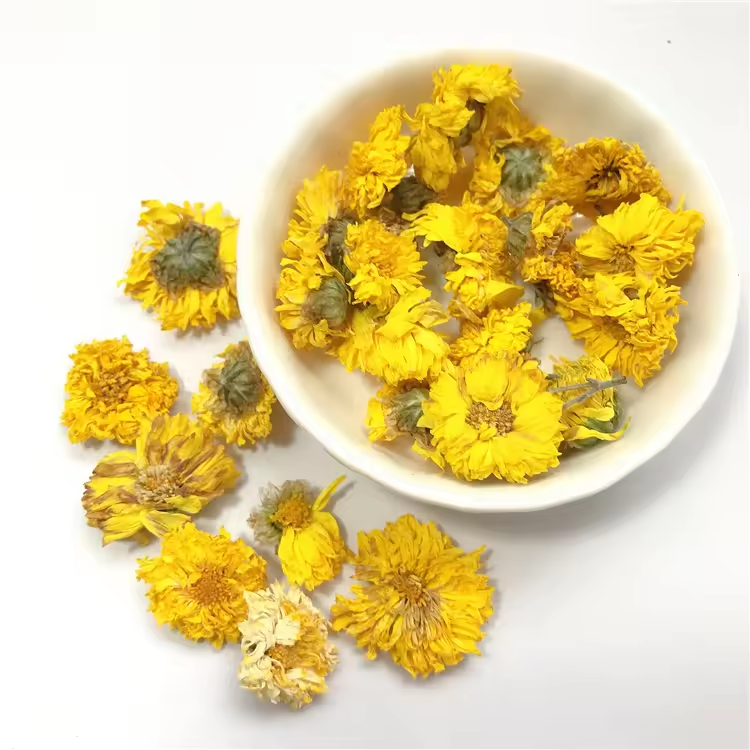
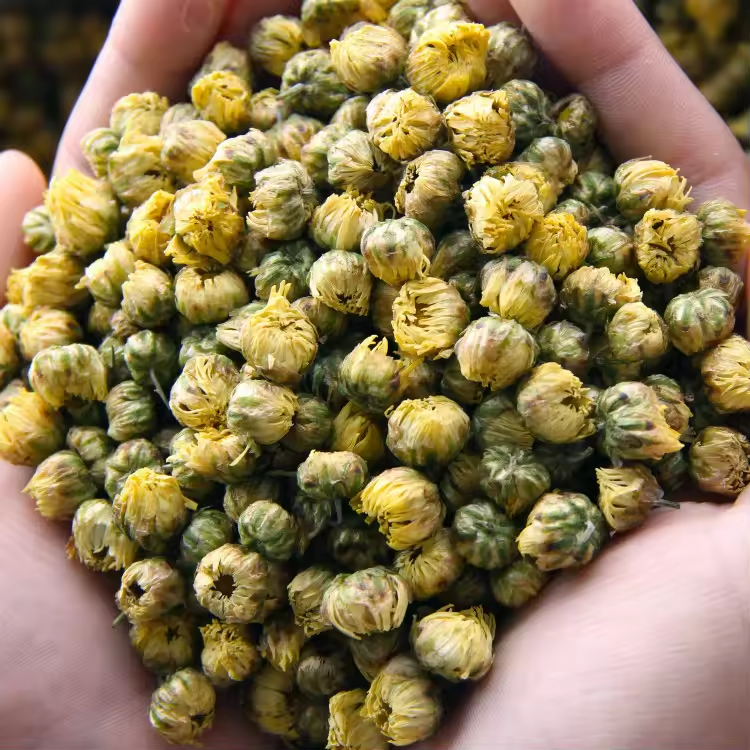
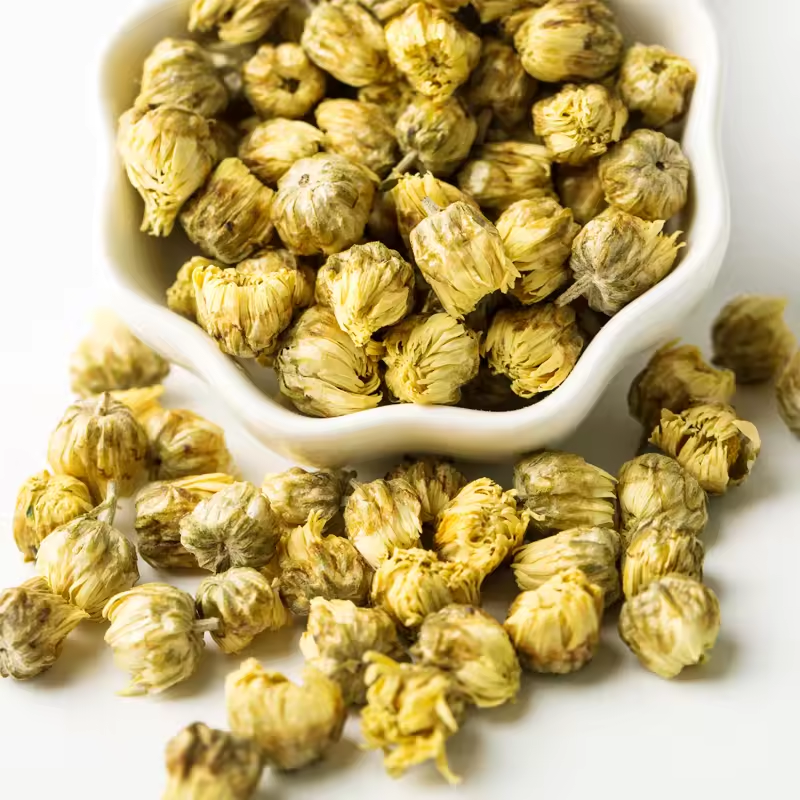
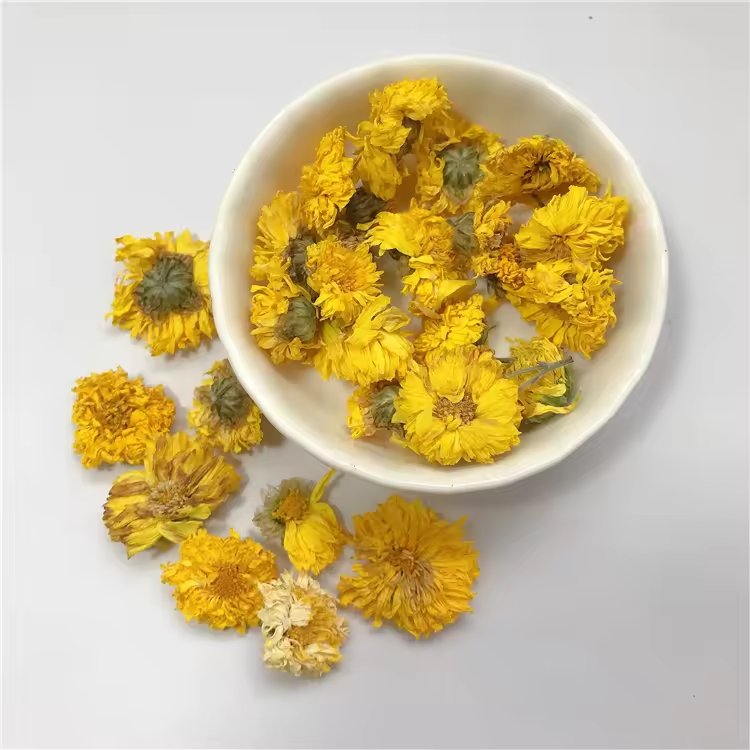
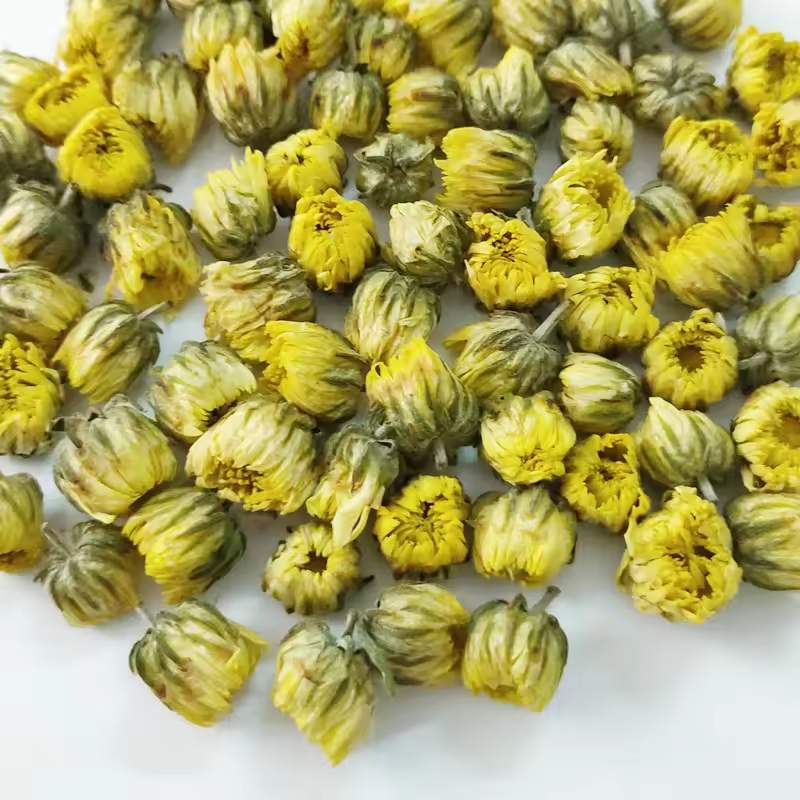
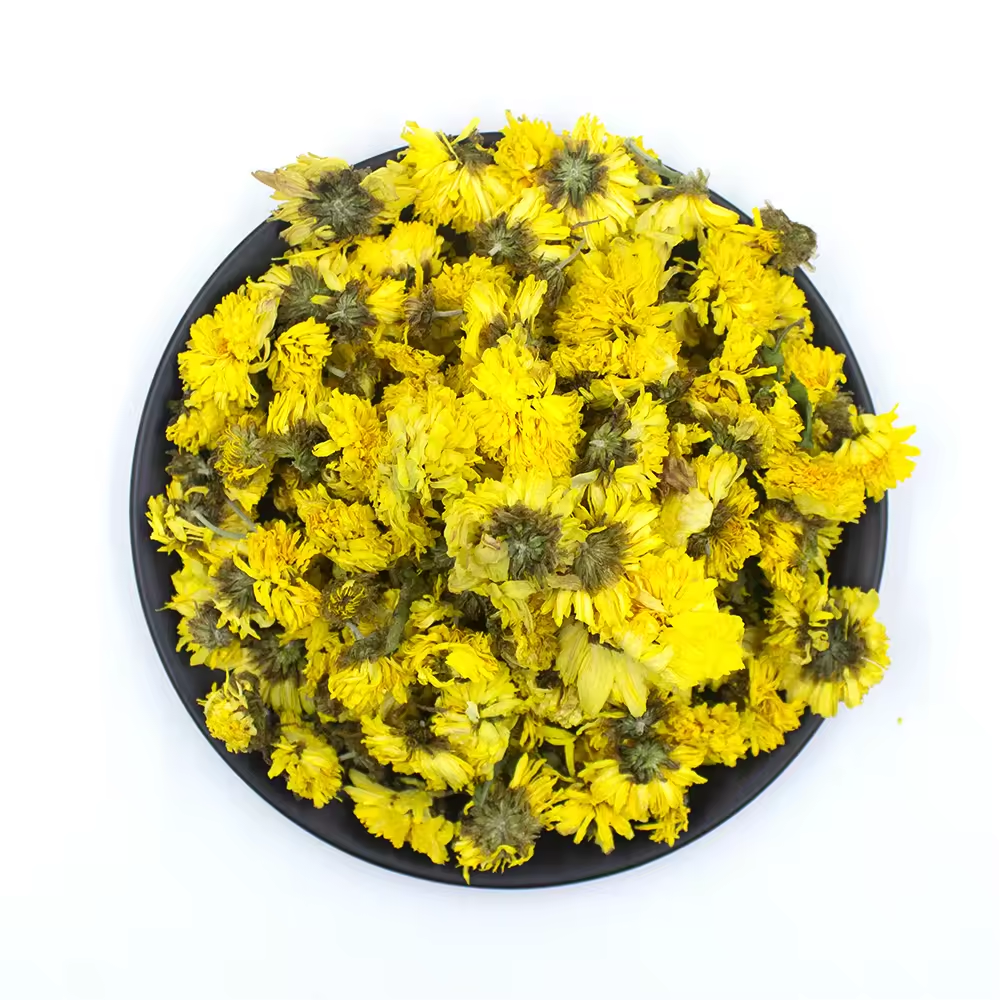
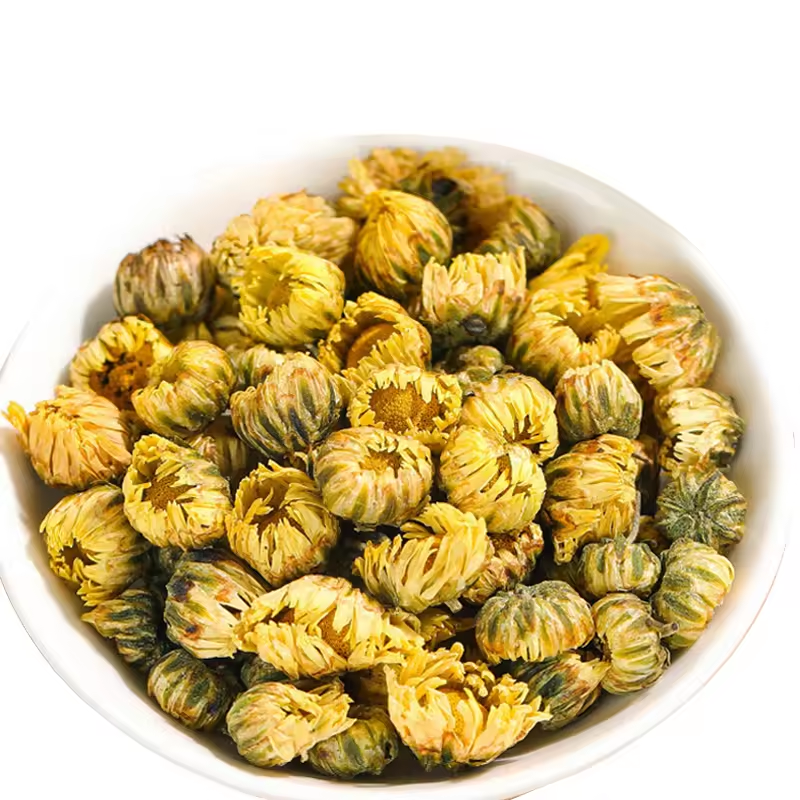
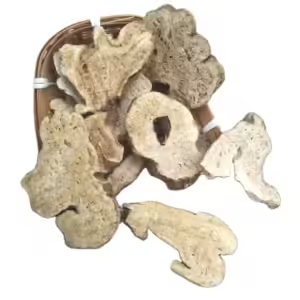
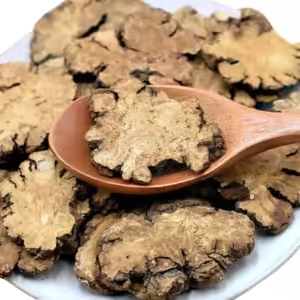
Recensioni
Ancora non ci sono recensioni.